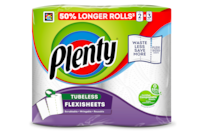4 people found this helpful
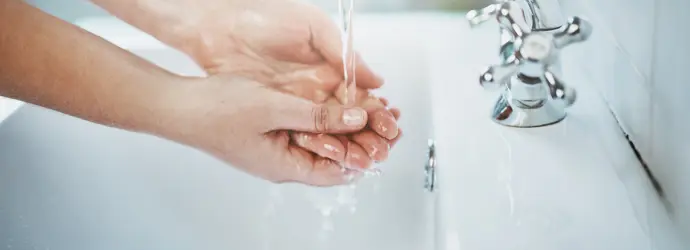
When should you wash your hands?
Washing your hands regularly and thoroughly is very important – no one likes having sticky fingers! Knowing how to do it properly removes dirt, viruses and bacteria from your hands and stops them from both infecting you, and spreading to surfaces, objects and other people! This can prevent the spread of illnesses like food poisoning, flu, diarrhoea and coronavirus. If you’d like more information, read the official advice on health, hygiene and coronavirus.
Read on to find out when you should wash your hands, and how to wash them effectively with just soap and water.
So when exactly should I wash my hands?
The more you wash your hands, the better! Here are some occasions where washing your hands is advised:
- After using the toilet or changing a nappy
- After touching rubbish or bins
- Before, during and after preparing food, particularly when handling raw foods like meat and vegetables
- Before eating or handling food
- After blowing your nose, sneezing or coughing
- Before and after treating a cut or wound
- Before and after caring for someone who is sick, especially with vomiting or diarrhoea
- After touching animals, including household pets, their food and after cleaning their cages
- Before and after entering healthcare settings – such as visiting someone in hospital, or visiting the doctor
It’s also important to keep your house clean and free of germs, to stop them transferring onto your hands in the first place! Our guide on health and hygiene in the home has some handy tips for all the different areas of your house.
How to wash your hands
Here’s what you’ll need:
- Clean, running water
- Soap
- Plenty Kitchen Towels
Here’s how to wash your hands in a way that makes sure every part of your hands gets properly cleaned. It should take around 20 seconds – about the same time as it takes to sing “Happy Birthday” twice!
-

To start off, wet your hands with clean, running water. If you’re worried about the amount of water you’re using, read our guide on how to save water at home. -

Apply a good amount of soap – enough to cover your hands. Using either a bar of soap or liquid soap is fine! -

Rub your hands together to create a lather. - Use one of your hands to rub the back of your other hand. Pay special attention to clean in between your fingers. Swap hands and repeat.
- Rub your hands together, again making sure to clean in between your fingers.
- Clean the backs of your fingers against your palms by holding them together in a clasped position.
- Clean the tips of your fingers by rubbing them in small circular motions against the opposite palm.
- Rub your thumb using your opposite hand. Then do the same for the opposite thumb.
-

Rinse the soap off your hands with water. -

Dry off your hands hygienically using a Plenty Flexisheets. They’re perfect for quick-access post-hand washing thanks to their handy single sheets. -

Use the disposable Plenty Flexisheets to turn off the tap without touching it with your clean hands!
Tip
If you don’t have access to soap and water then any alcohol-based hand sanitiser will also do the job! Rub it over your hands then wash them with soap when you get the chance
It’s as easy as that! Now wherever you are, you can be sure that you’re washing your hands in a thorough and hygienic way. If you want to learn more, why not read our articles on the 10 golden rules of kitchen hygiene and our complete guide to health and hygiene in the home.
Related articles
A simple but effective house cleaning schedule
A thorough cleaning schedule is vital for home hygiene. Discover how to put together a daily, weekly and monthly house cleaning rota in our guide.
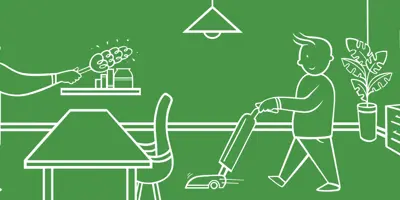
A DIY, natural carpet cleaner to make at home
Uhoh! Accidents happen. But you can treat spills & stains with a DIY carpet cleaner. Learn how to make carpet cleaner here.
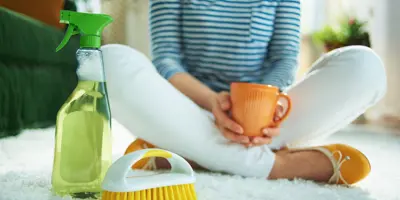
Make your own all-natural, homemade yoga mat cleaner
Keep your yoga mat in great shape with this natural yoga mat cleaner recipe. Learn how to mix a DIY yoga mat cleaner, and a method for cleaning, here.
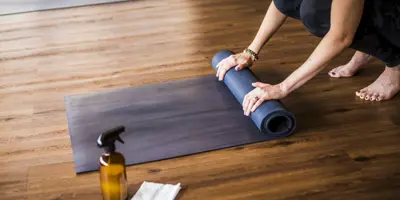
Easy guide on how to clean earrings at home
Learn how to clean earrings at home in this article that covers the importance of cleaning earrings, what to clean earrings with & how to clean smelly earrings.

2 easy ways to make homemade musical instruments for kids
Looking for easy ways to have fun with your kids while teaching them how to recycle? Learn how to make musical instruments from waste material.

Why is my cat being sick? Symptoms, causes, and solutions
“Why is my cat sick?” Learn about the signs of illness in cats, the reasons why your feline friend might be sick, and how to treat a sick cat at home.


